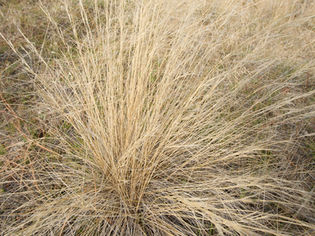Sustainable Grazing

BC's unique grasslands
Continuous grazing was the common practice for many decades, though it is now known to be harmful to most range lands except in specific areas or under specific conditions. It is particularly harmful in BC's grasslands as the grasslands here are functionally different form those on the prairies and in the Midwest. Those grasslands evolved with fairly heavy, relatively constant grazing pressure from the enormous herds of bison that ranged over the middle of the continent. The grasses there developed the ability to recover and regrow very quickly from grazing in order to maintain themselves. Here on the other side of the Rockies however, grasslands evolved with light, occasional grazing from small groups of deer and occasional passes by large herds of elk. This means the grasses here do not recover as fast and are more quickly harmed and killed by overgrazing. It is important to respect this unique characteristic of BC's grasslands when creating a grazing management plan.

The difference between overgrazed grasslands (left) and healthy grasslands (right) can be dramatic. Note the exposed soil and lack of healthy tall grass on the left
Proper grazing management, such as rotational grazing, is crucial for conserving water and enhancing land productivity. By implementing planned movement of livestock across fields, overgrazing is minimized, and soil and grass health are maintained, preventing erosion and improving pasture quality. Compared to continuous grazing, rotational grazing can increase forage harvested per acre, ultimately leading to improved water absorption, decreased runoff, and sustainable grazing practices. This approach not only supports conservation efforts but also contributes to long-term water availability and efficient water usage in ranching operations.
BC’s grasslands are valuable spring and fall forage grazing areas. Good range management commonly focuses on two objectives: leaving sufficient leaf area for plants to photosynthesize, and maintaining carbohydrate reserves of perennial forage plants. These goals can be achieved with a variety of techniques:
• Graze the previous year’s forage production early before spring growth begins.
• When used in spring, graze for short periods so that leaf re-growth occurs afterwards.
• Make sure grazing is stopped while there is sufficient leaf material to maintain photosynthesis.
• Avoid grazing spring ranges in the autumn to allow for fall re-growth so that carbohydrate reserves continue to build.
A good rotational grazing system takes many different variables into account such as livestock distribution, grazing frequency, pasture design, riparian area management, and watering. Systems can vary significantly from region to region and from ranch to ranch.
To start developing a rotational grazing system, check out the BC Forage Councils free online course on Advanced Grazing Systems
Sustainable grazing practices
Using sustainable grazing practices ensures BC's grasslands stay healthy and can continue to provide high quality forage, recreation, and conservation opportunities
Important conservation considerations
Range areas can form an important part of grassland conservation efforts. While much of the focus with rotational grazing and range management involves managing forage and grassland structure, it is important to integrate management practices that ensure minimal impact on non-grassland habitats as well. Riparian and wetland areas are a valuable source of water for ranging cattle, however these habitats are particularly susceptible to damage by livestock.
Hooves are a primary source of soil disturbance and soil compaction in these areas, which can affect hydrology and water absorption.
Continual grazing on understood plants in riparian areas can lead to reduced vegetation cover along the banks, leaving the banks highly susceptible to erosion, which then leads to sedimentation and lower quality water. Hoof damage can severely worsen bank erosion as well.
Further Reading
Grazing Management Guide
Canadian Cattlemen: Rotational Grazing for Beginners
https://www.canadiancattlemen.ca/features/rotational-grazing-for-beginners/
Beef Cattle Research Foundation: Grazing Management
https://www.beefresearch.ca/topics/grazing-management/
Beef Cattle Research Foundation: Plan to adapt when grazing (article with link to webinar)
https://www.beefresearch.ca/blog/plan-to-adapt-when-grazing/
Grasslands Conservation Council of BC: Grasslands Monitoring- A Tool for Ranchers
Western Producer: Rotational Grazing has other benefits
https://www.producer.com/news/rotational-grazing-has-other-benefits/













